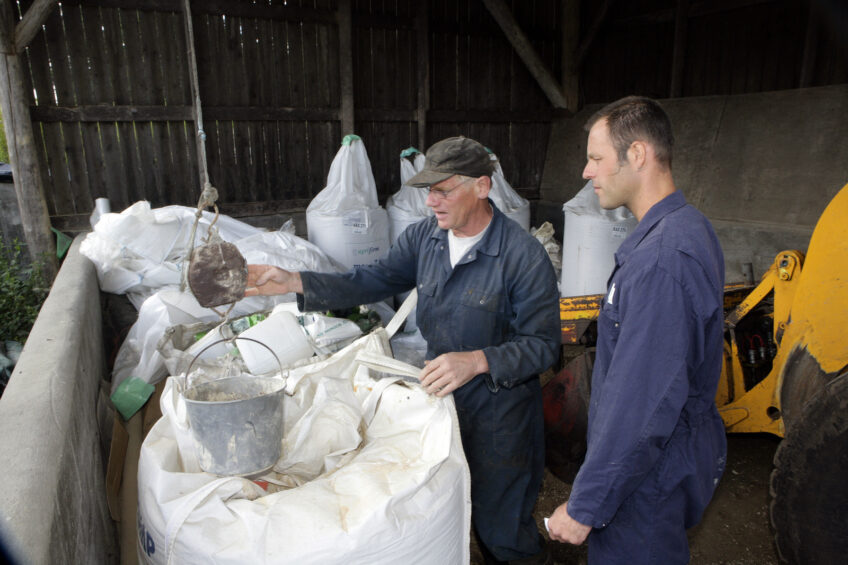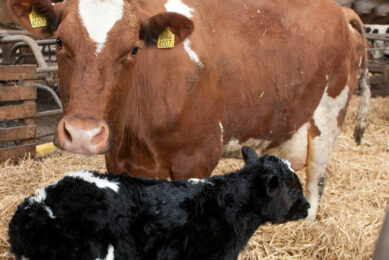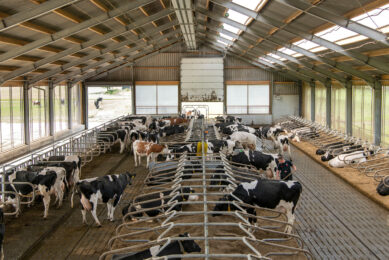Chromium use in transition cows

Trace minerals have critical roles in the immune function and cell metabolism in ruminants. For cows in transition or during early lactation, chromium in particular can have beneficial results.
The modern dairy cow is a model of remarkable productive efficiency. In high-producing dairy herds with annual average milk production levels in excess of 15,000 kg/cow, 75% or more of the energy consumed is translated into milk production and other functions beyond maintenance. These levels of production require exquisite control of metabolism and interplay between key physiological systems in order to support simultaneously high production, health, and reproductive capacity.
Excellent nutritional management of dairy cows, particularly during the transition period from late pregnancy to early lactation, is critically important to meeting overall demands for milk yield while maintaining health and reproductive capacity. Although systems for nutrient requirements (e.g. NRC, 2001) typically use classically-defined accounting approaches to determine requirements for maintenance, growth, pregnancy and lactation in dairy cattle, it is becoming increasingly clear that nutrients have roles in regulation of gene expression and modulating other aspects of metabolic and immunological systems.
Transition period in dairy cattle critical
The most critical time-frame of the lactation cycle in dairy cattle is the transition period because it represents the period of most dramatic and dynamic daily change in nutrient demands and partitioning to various physiological functions.
Dairy cows adapt to sharply increased nutritional demands to support milk production through exquisite homeorhetic control mechanisms. Concurrent with these changes in nutrient demand, transition dairy cows undergo a period of reduced immunological capacity during the last several weeks prior to parturition and the first several weeks postpartum, as an example, decreased neutrophil function during the periparturient period has been associated with disorders including retained placenta, metritis and mastitis. Therefore, the time of the greatest potential risk for infectious and metabolic diseases overlaps the time of greatest acceleration of milk production. Furthermore, research from 2009 described the changes in oxidative metabolism that occur and the implications of increased production of reactive oxygen species (ROS) during this transition period.
Role of trace minerals
It has become increasingly clear that there is substantial interplay between energy metabolism, immune function and oxidative metabolism in the transition cow and that these systems cannot be considered independently of one another. And trace minerals have critical roles in this. Trace minerals are involved in the antioxidant defence system and a deficiency of any of them may depress immunity in transition cows. To date, the primary trace elements of interest in diets for dairy cattle have included zinc (Zn), copper (Cu), manganese (Mn) and selenium (Se), although data also support potentially important roles of chromium (Cr), cobalt (Co) and iron (Fe) in diets. Although the primary role of Cr appears to relate to its ability to enhance the action of insulin, studies have indicated that Cr supplementation may affect health and immune response in ruminants. Relative to innate immunity, a study showed that supplemental Cr did not affect PMN phagocytic function of dairy cows from six weeks prepartum to six weeks postpartum. However, other studies with periparturient dairy cows indicate that Cr supplementation may affect cell-mediated and humoral immune responses. Cell-mediated immunity was assessed in vitro using antigen (ovalbumin) – and mitogen-stimulated blastogenesis of peripheral blood mononuclear cells collected from prepartum period through early lactation, with Cr supplementation leading to increased blastogenic responses of peripheral blood mononuclear cells to mitogen stimulation. This team also demonstrated in 1996 that in vitro concentrations of interferon-γ, interleukin-2, and tumour necrosis factor-α of mitogen-stimulated mononuclear cells collected during the peripartum period were decreased in cows supplemented with Cr compared with controls.
As for humoral immune response in periparturient and early lactation dairy cows, they showed that anti-ovalbumin antibody responses were increased when supplemental Cr was fed and in 2003, researchers reported that tetanus toxoid-specific antibody titres were increased in cows fed 5 mg Cr per head per day compared with non-supplemented cows. Recently, it was reported decreased circulating cortisol concentrations in cows fed Cr, which may relate to the effects on aspects of immune function described previously.
Cr during transition and early lactation
As described above, Cr has been shown to have a variety of effects on indices of immune function and metabolism. More recently, larger-scale studies have been conducted with different forms of Cr in order to determine effects on lactational performance, metabolism, and reproductive function. Results from six of these experiments are summarised in Table 1. Of these experiments, five reported increased or trends for increased milk yield during the postpartum period, five reported increased or trends toward increased DMI during at least part of the study period, and four out of six studies reported either decreased circulating NEFA concentrations or trends toward decreased NEFA concentrations, particularly during the prepartum period. Although reproductive outcomes typically were not measured in these studies they reported trends toward a greater percentage (50 vs. 39.2%) of cows pregnant during the first 28-d of the mating season and Kafilzadeh et al. (2012) reported decreased days to first ovulation in cows supplemented with Cr but no other effects on reproduction. Furthermore, although we did not find differences in milk yield in a recent study, cows fed Cr during the prepartum and postpartum periods had trends (P < 0.10) toward increased prepartum days in milk and decreased NEFA, and had decreased incidence of cytological endometritis diagnosed, as discussed previously, supporting potential effects of Cr on reproductive function that warrant further investigation.
Implications for the nutritionist
Our knowledge of the specific roles of trace minerals in metabolism and immunity has grown substantially during the past 15 years, but it is clear that we still have much to learn regarding trace mineral nutrition in dairy cattle. Although research is starting to unravel the effects of level and source of supplemental trace minerals, we need to continue to refine our understanding of these interactions of source and level, and how they in turn influence both the underlying metabolic and immunological systems and also phenotypic outcomes of economic importance. We need to further refine our dietary formulation models to better account for antagonisms for absorption and also requirements. Chromium is a relatively new trace mineral for supplementation in diets for dairy cattle.
Results to date indicate positive effects on both production and reproduction; larger scale research needs to be conducted to evaluate if these reproductive benefits truly exist. For the practising nutritionist, it is important to recognise that responses to trace mineral nutrition are likely to be subtle, yet important modulations in biological function that likely translate to improved health, performance, and reproductive performance over the longer term.
Although there is heterogeneity of response to many components of animal responses to supplementation with more bioavailable trace minerals, generally favourable responses to replacement of sulphates or oxides with more bioavailable forms indicates the need to evaluate trace mineral supplementation strategies and become more strategic in terms of approach (i.e., feed less total mineral from more bioavailable sources).
Join 13,000+ subscribers
Subscribe to our newsletter to stay updated about all the need-to-know content in the dairy sector, two times a week.












